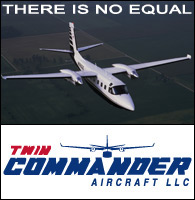How to Jointly Own an Aircraft


By Louis M. Meiners, Jr.
Tax and regulatory authorities generally provide wide latitude in structuring joint ownership of aircraft. Generally, co-owners have the opportunity to choose between a number of alternatives for the manner of ownership and operation. Their ultimate choice should be guided not only by tax outcomes, but also by liability and regulatory considerations.
The most common ways to jointly own aircraft are co-ownership, partnership, corporate ownership, and limited liability company ownership. Co-ownership refers to listing multiple owners on the registration filed with the FAA in Oklahoma City. Partnership refers to ownership governed by a partnership instrument or under a state�s Uniform Partnership Act. Corporate ownership can be through a C corporation; a stand-alone taxpayer; or an S corporation, which has flow-through tax characteristics similar to a partnership. A limited liability company is a relatively recent hybrid method of ownership that combines both corporate and partnership characteristics.
If an aircraft is being owned and operated by a group of individuals strictly for personal use, the form of co-ownership has little impact on the income tax consequences. Generally, operations will not result in deductions, depreciation will not be allowed, and an ultimate loss on disposition will not result in a tax deduction. If the aircraft is ultimately sold at a profit, it will be subject to capital gains tax to the extent that ultimate proceeds exceed both the original cost and improvements.
When one or more users of the aircraft intend to devote it to business use, the income tax consequences of the form of co-ownership become critical. Co-owners of business property are generally taxed as partners in a partnership, regardless of whether or not they have a formal partnership agreement. Like partners operating under a formal agreement, co-owners may generally allocate income or deductions for income tax purposes as they see fit, provided that such tax allocations accord with the economic deal struck between the partners. Generally stated, the partnership rules of Subchapter K of the Internal Revenue Code provide significant flexibility�although this is limited by certain anti-abuse rules that can apply regardless of lack of abusive intent.
Another important characteristic of partnerships is that treatment of property as business or personal is determined at the partnership level, not the individual partner level, which means that personal use by one partner may result in disallowance of deductions to other partners who use the aircraft only for business.
The sale of an interest in a partnership that holds an aircraft will generally result in ordinary income treatment to the extent that the tax depreciation claimed on the aircraft exceeds its economic depreciation. Subject to certain partnership elections, the purchaser of a partnership interest will generally be entitled to step-up the basis of the underlying purchased aircraft interest, and begin depreciating his proportionate cost regardless of the remaining bases of the other partners.
A corporation taxed under Subchapter S provides for flow-through taxation to the owners rather than entity-level taxation. Although in this regard S corporations are similar to partnerships, an important difference is that S corporations cannot allocate specific elements of income and loss among the shareholders/co-owners; all elements are allocated proportionately. The sale of stock of an S corporation that holds an aircraft will generally result in capital gains tax, rather than ordinary-income recapture by the seller. The purchaser, however, will not generally be allowed to step-up the basis of the underlying aircraft to his new purchase price.
A co-owned LLC is normally taxed as a partnership. However, the LLC may elect to be taxed as a corporation, either under Subchapter C or Subchapter S.
CO-OWNERSHIP BY ELECTING OUT OF SUBCHAPTER K
Aircraft co-owners utilizing a co-ownership, partnership, or a limited liability company often have an opportunity for an alternate method of taxation by electing out of Subchapter K. The election out of Subchapter K eliminates the problem of one co-owner�s personal use creating disallowance to the other partners, as well as certain anti-abuse provisions that may result in unintended adverse tax consequences. The decision should be made in close consultation with your tax adviser, but if an entity or co-ownership is formed merely to hold title to property for the benefit of its owners, by electing out of Subchapter K it may be possible to treat each partner as holding an undivided interest in the aircraft itself.
Such treatment requires an election under Regulation �1.761-2 of the Internal Revenue Code and prohibits the joint conduct of a trade or business. This treatment will be particularly appropriate when one co-owner chooses to use his share of the aircraft for business and another co-owner uses the aircraft personally. The business partner would be entitled to depreciate his share of the aircraft, while the personal user will preserve his income tax basis to minimize any gain upon ultimate sale.
SALES TAX CONSEQUENCES
The sale of a co-ownership interest in property is treated as a sale of tangible personal property and generally is subject to state sales or use tax. Each time a portion of the aircraft is sold, a taxable event occurs, and sales tax may be due at least on that portion of the property. Several states have exemptions for casual sales of aircraft, but the majority will tax each individual transfer. If the ownership interest is held in an entity, then it is the partnership interest, corporate stock, or membership interest that is sold, not the underlying asset. When sold, entities are generally considered intangibles exempt from sales tax.
LIABILITY ISSUES WITH JOINTLY OWNED AIRCRAFT
Individuals are always subject to liability for their own negligence. Under the Uniform Partnership Act, they are also liable for the negligence of their partners. If the aircraft is held in a general partnership (whether the underlying partnership agreement is written or unwritten) partners generally hold themselves responsible for one another. Co-ownership may be treated as a partnership operation as well; therefore, it provides little if any increase in liability protection. Both limited liability company ownership and corporate ownership do provide significant protection from a joint owner�s negligence. Because adequate liability insurance is generally unavailable for aircraft operations, except in the case of professional flight departments, liability should play a major factor in the design of aircraft joint ownership.
BE WARY OF FAA LIMITATIONS
Although joint owners of aircraft may make reasoned choices within a wide selection of vehicles, the FAA does impose some surprising, if not totally irrational, limitations on co-ownership. Consider the following:
-
1. A non-resident alien can own an aircraft individually, or as a co-owner, but not as a partner in a partnership.
2. A non-resident alien can be a significant shareholder in a corporation within certain limitations, but not a member in a limited liability company.
3. A corporation can be a member in a limited liability company, but not a partner in a partnership.
4. A foreign corporation can own an aircraft within certain limitations, but not a foreign LLC.
MERELY AN OVERVIEW
The outline above represents only a cursory overview. Due to the interaction of federal and state tax laws, liability considerations, and FAA regulations, it is essential that you receive professional legal advice before entering into a joint ownership transaction involving an aircraft.
Advocate Consulting Legal Group, PLLC is a law firm whose practice is limited to serving the needs of aircraft owners and operators relating to issues of income tax, sales tax, federal aviation regulations, and other related organizational and operational issues.
IRS Circular 230 Disclosure. New IRS rules impose requirements concerning any written federal tax advice from attorneys. To ensure compliance with those rules, we inform you that any U.S. federal tax advice contained in this communication (including any attachments) is not intended or written to be used, and cannot be used, for the purpose of (i) avoiding penalties under federal tax laws, specifically including the Internal Revenue Code, or (ii) promoting, marketing or recommending to another party any transaction or matter addressed herein.
Discuss this article in the forums...







